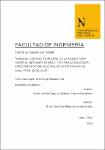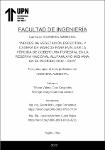Mostrar el registro sencillo del ítem
Classification of land cover in optical satellite images, using characteristics and color indices
| dc.contributor.author | Auccahuasi, Wilver | |
| dc.contributor.author | Herrera, Lucas | |
| dc.contributor.author | Rojas, Karin | |
| dc.contributor.author | Urbano, Kitty | |
| dc.contributor.author | Romero, Luis | |
| dc.contributor.author | Lovera, Denny | |
| dc.contributor.author | Cueva, Juanita | |
| dc.contributor.author | Perez, Ivan | |
| dc.contributor.author | Santos, César | |
| dc.contributor.author | Leva, Antenor | |
| dc.contributor.author | Fuentes, Alfonso | |
| dc.contributor.author | Sernaque, Fernando | |
| dc.date.accessioned | 2023-10-18T20:33:47Z | |
| dc.date.available | 2023-10-18T20:33:47Z | |
| dc.date.issued | 2023-04-04 | |
| dc.identifier.citation | Auccahuasi, W., Herrera, L., Rojas, K., Urbano, K., Romero, L., Lovera, D., Cueva, J., Perez, I., Santos, C., Leva, A., Fuentes, A., & Sernaque, F. (2023). Classification of land cover in optical satellite images, using characteristics and color indices. AIP Conference Proceedings, 2725(1), 050002. https://doi.org/10.1063/5.0125496 | es_PE |
| dc.identifier.other | . | es_PE |
| dc.identifier.uri | https://hdl.handle.net/11537/34609 | |
| dc.description | El texto completo de este trabajo no está disponible en el Repositorio Académico UPN por restricciones de la casa editorial donde ha sido publicado. | es_PE |
| dc.description.abstract | Satellite images are being used more and more frequently in the analysis of land coverage, due to their ability to record large areas of land, managing to analyze their type of coverage and the uses that it is providing, in this work the images of areas corresponding to the Amazon, where an attempt is made to evaluate through the use of Neural Networks, if the chosen area is being covered by vegetation or does not present vegetation, this analysis is carried out thanks to the calculation of the reflectance and the NDVI vegetation index. For the purposes of being able to analyze the analysis methodology, a tool developed in Matlab is provided, where all the processes can be carried out both for the management of the images, as well as to carry out the procedures for the use of neural networks, as well as the visualization of the characteristics and the final result of the classification. The proposed methodology is scalable and can be adapted to multiple needs and uses, managing to increase the number of characteristics to evaluate, such as being able to use different types of groups of images. An image database model is also presented that corresponds to areas with vegetation cover and areas that do not correspond to vegetation cover. With the use of the developed application, it is possible to test the proposed methodology. | es_PE |
| dc.format | application/pdf | es_PE |
| dc.language.iso | eng | es_PE |
| dc.publisher | American Institute of Physics | es_PE |
| dc.rights | info:eu-repo/semantics/closedAccess | es_PE |
| dc.source | Universidad Privada del Norte | es_PE |
| dc.source | Repositorio Institucional - UPN | es_PE |
| dc.subject | MATLAB | es_PE |
| dc.subject | Artificial neural networks | es_PE |
| dc.subject | Communication satellites | es_PE |
| dc.subject | Optical properties | es_PE |
| dc.title | Classification of land cover in optical satellite images, using characteristics and color indices | es_PE |
| dc.type | info:eu-repo/semantics/conferenceObject | es_PE |
| dc.publisher.country | PE | es_PE |
| dc.identifier.journal | AIP Conference Proceedings | es_PE |
| dc.description.peer-review | Revisión por pares | es_PE |
| dc.subject.ocde | https://purl.org/pe-repo/ocde/ford#2.02.04 | es_PE |
| dc.description.sede | Chorrillos | es_PE |
| dc.identifier.doi | https://doi.org/10.1063/5.0125496 |
Ficheros en el ítem
| Ficheros | Tamaño | Formato | Ver |
|---|---|---|---|
|
No hay ficheros asociados a este ítem. |
|||




